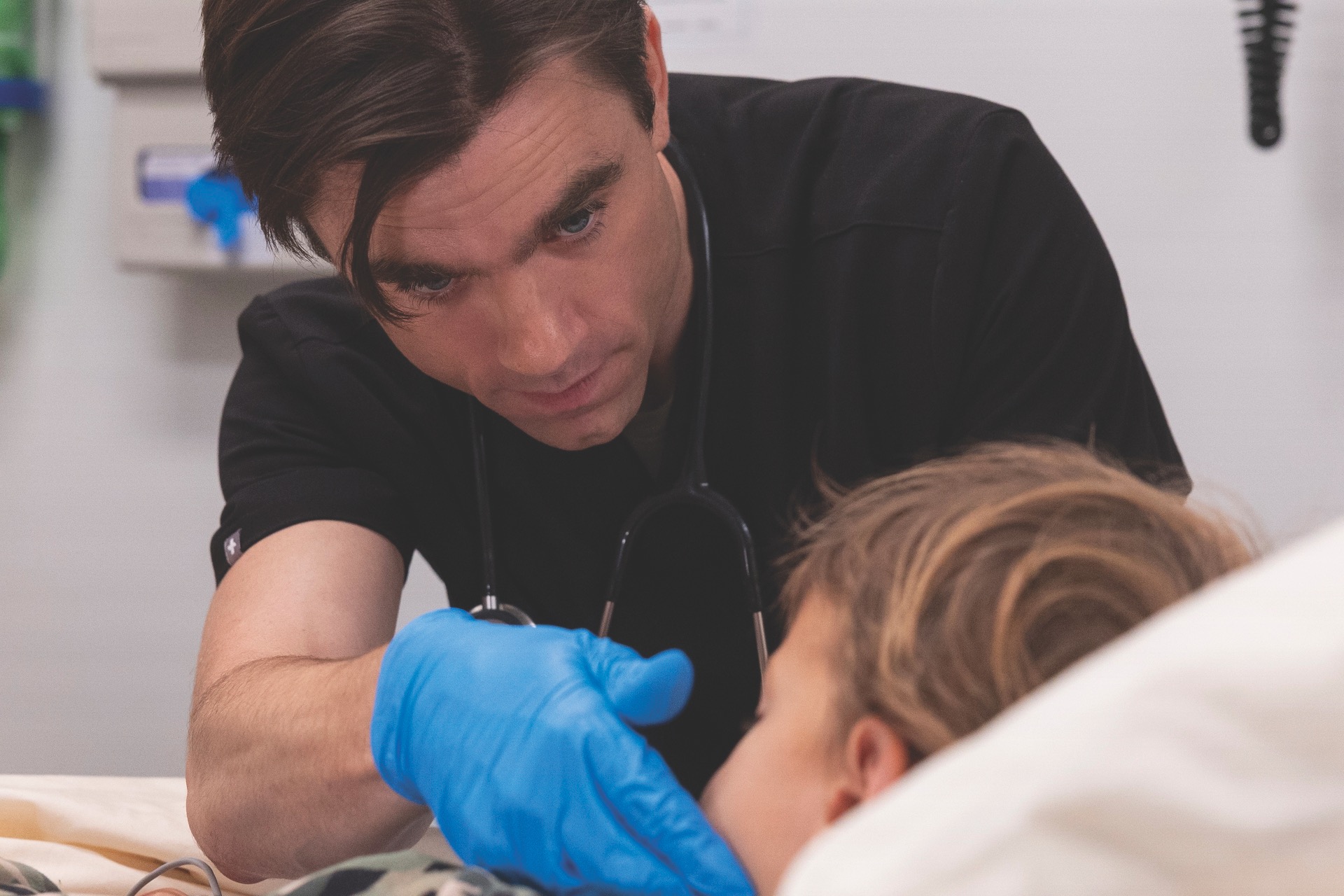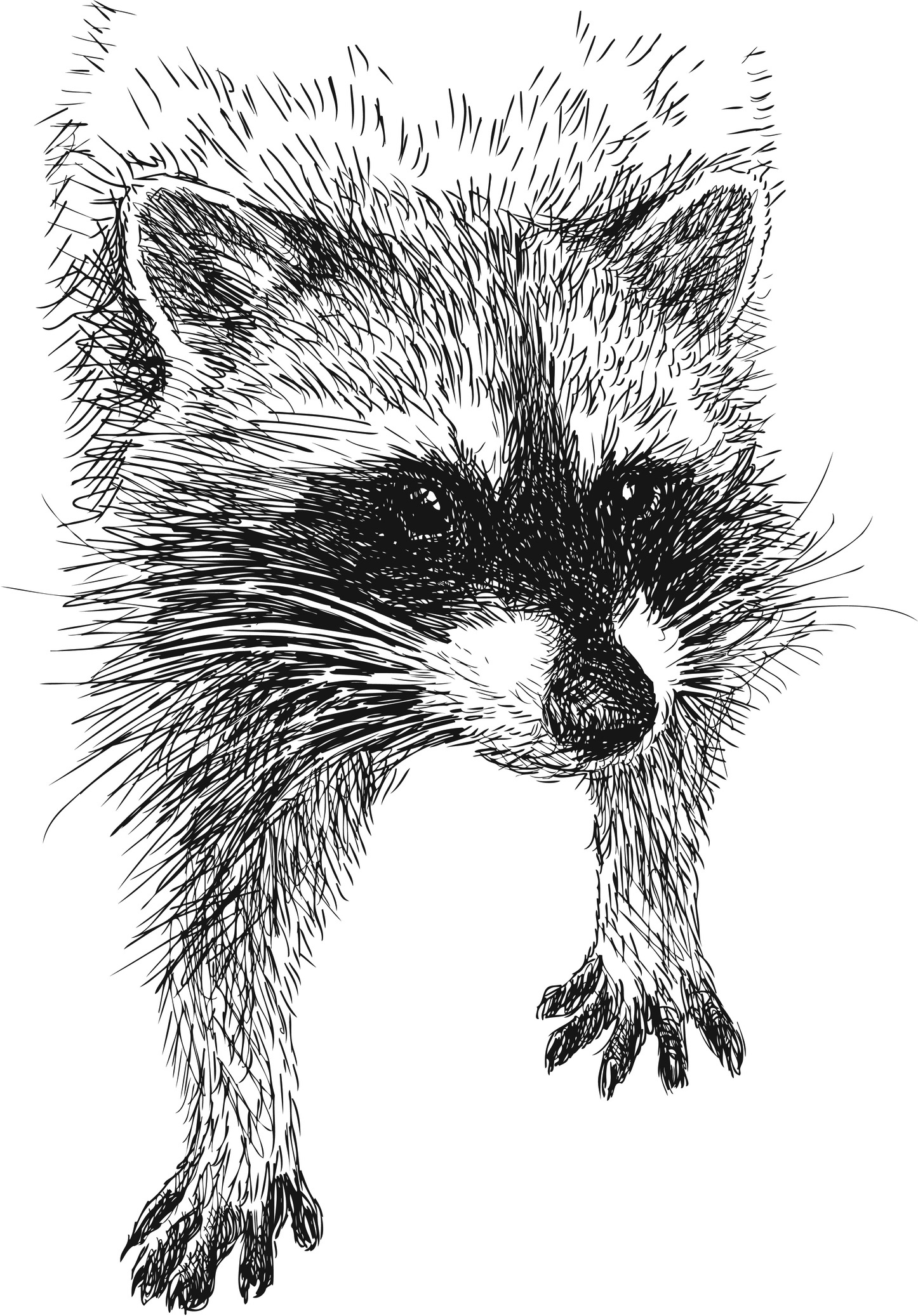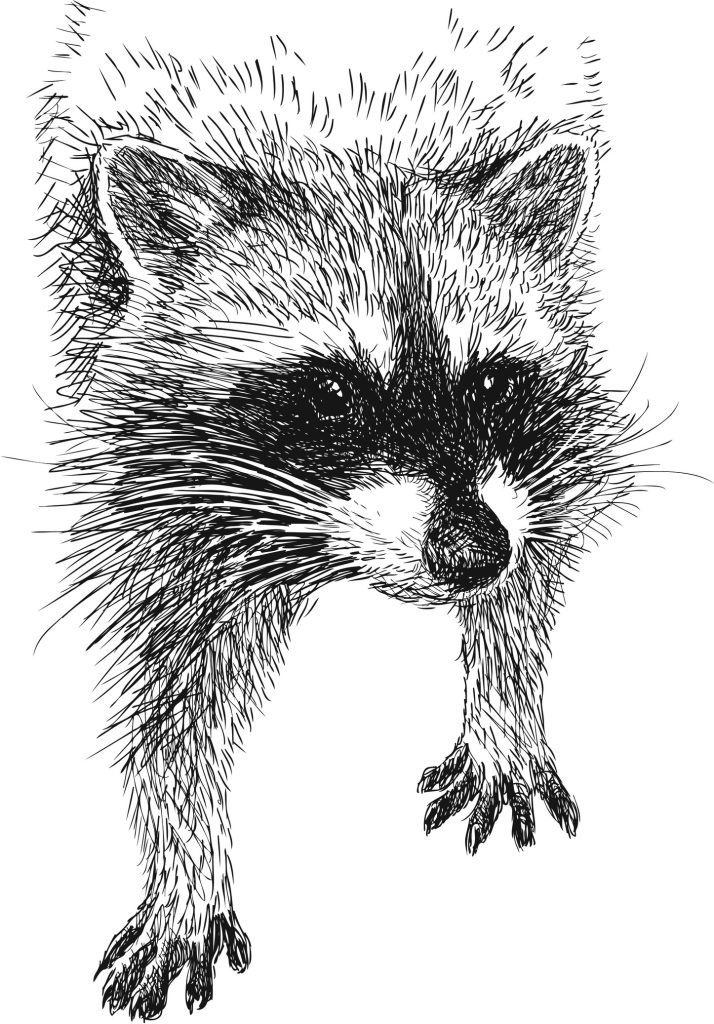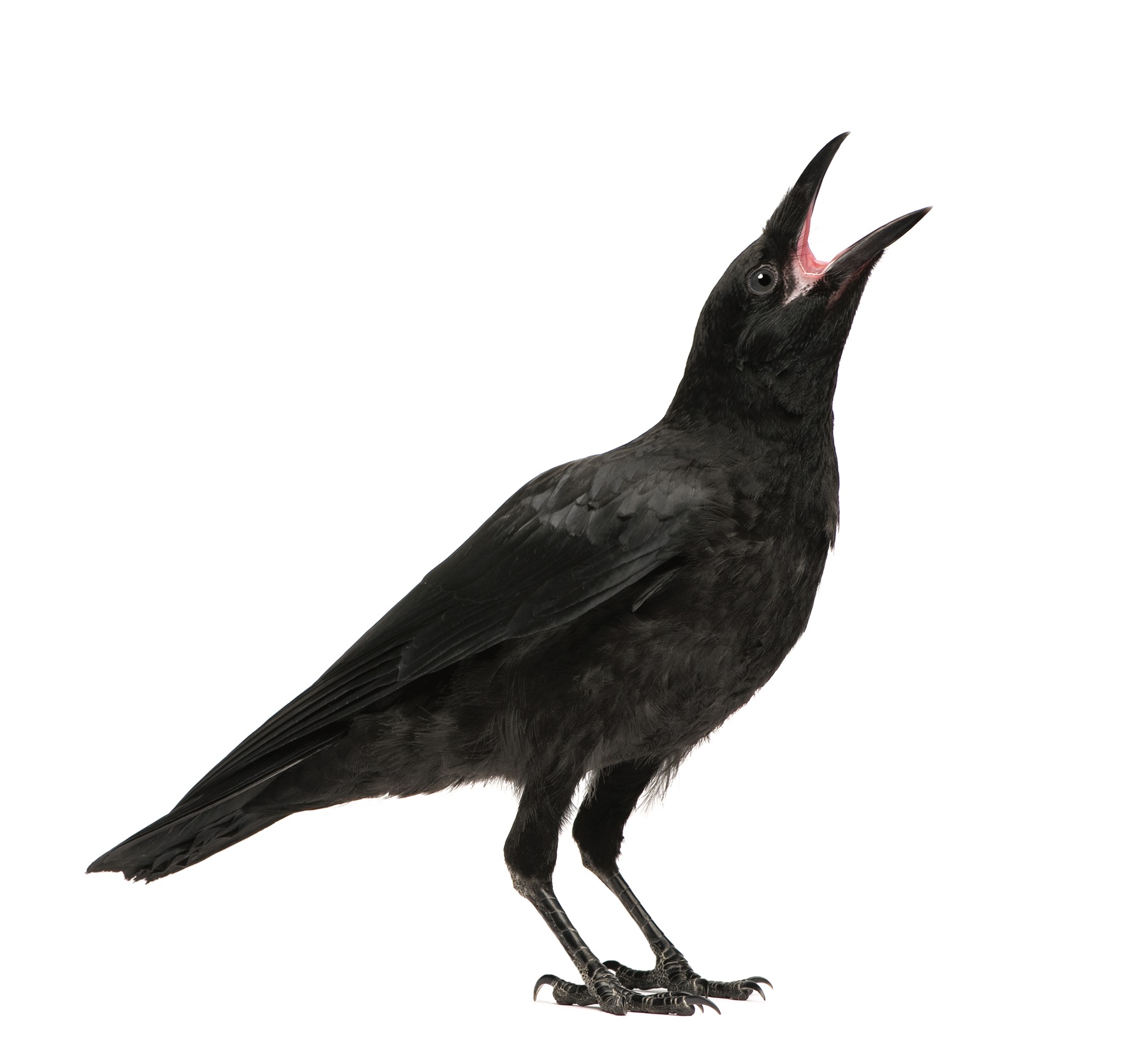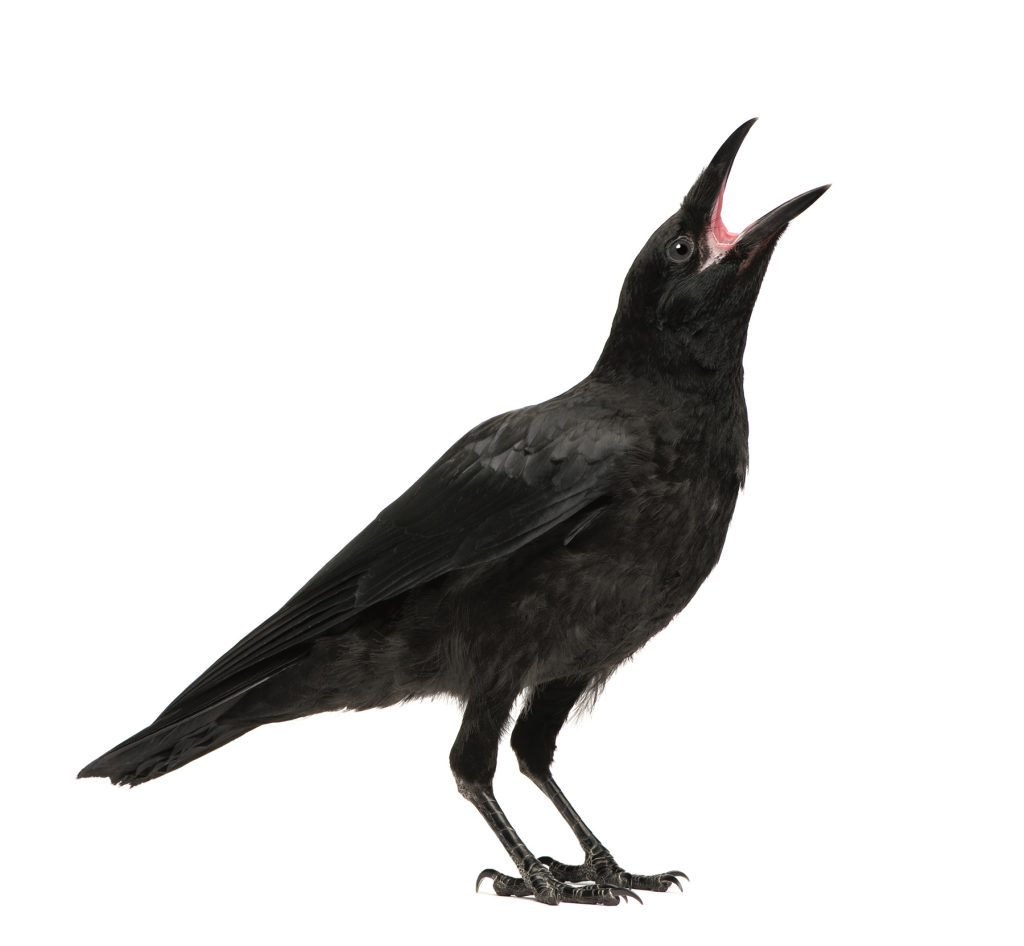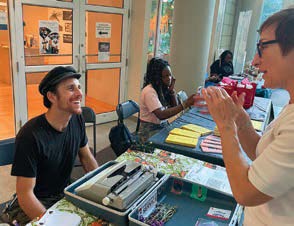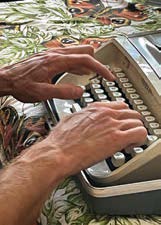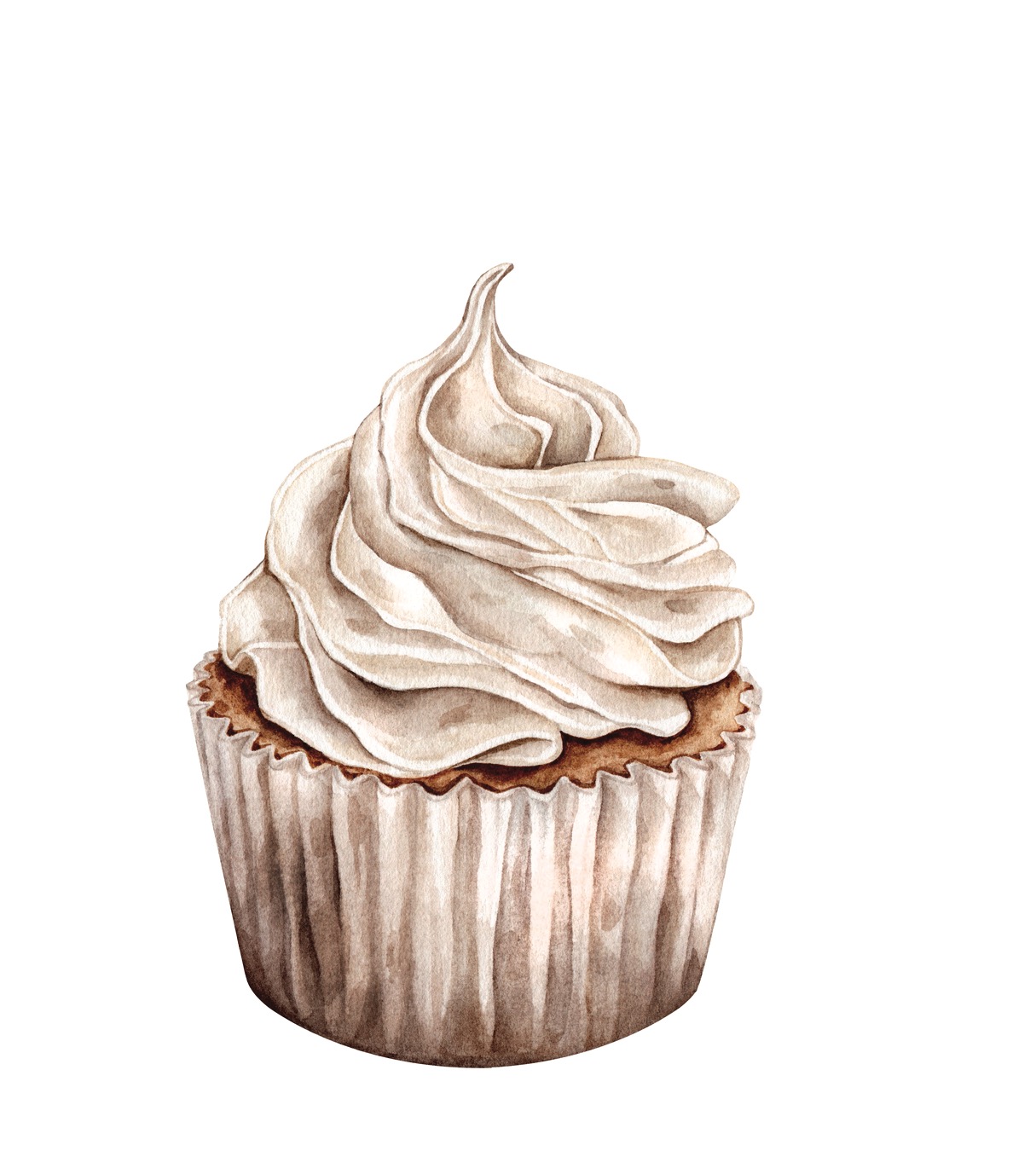Life’s Funny
LIFE'S FUNNY

Prescription for Success
Summerfield native Patrick Ball was born to play his hit TV role
By Maria Johnson
This holiday season, if you’re ambling the trails around Greensboro’s Lake Brandt and you think you’ve just passed the dimpled Dr. Frank Langdon from hit TV series The Pitt, you’re probably right.
That is, you’ve likely seen Patrick Ball, the Guilford County native who plays Langdon on the Emmy-winning HBO Max medical drama, soon to be in its second season.
Patrick, 36, plans to spend Christmas with his parents, Lee Ann and Jim Ball of Summerfield.
“Every time I go home, I run these trails,” Patrick says in a telephone interview. “I’ve run them in different chapters of my life. Returning to a familiar place, it becomes kind of my yardstick for growth.”
Since he left home, Patrick has done a heck of a lot of growing as an actor and as a person.
“He has integrity,” says his dad, proudly.
“He has found his way,” says his mom, relief audible in her voice.
As an actor, Patrick has experienced freakish success in the past year.
The one-in-a-million odds of any actor striking it big are very much like those of becoming a professional athlete.
Patrick’s newborn celebrity is astonishing, too, because the role that vaulted Patrick from dramatic obscurity to A-list luster so closely parallels the real-life careers of his parents.
Patrick plays the chief resident in a gritty Pittsburgh emergency room.
Lee Ann, now retired, was a registered nurse for Cone Health for almost 44 years, half of them spent in the emergency room.
“It was my passion,” she says.
Jim, also retired, worked for 40 years as a paramedic for Guilford County Emergency Medical Services. In the early 2000s, he held the record for saves in the field, meaning he basically brought 79 people back to life.
At home, when their kids were young, Jim and Lee Ann never talked about their high-stakes work, and Patrick, the oldest of three, had no interest in following their footsteps.
But he had a taste for high-risk/high-reward situations, a flair for the dramatic and a way of making his presence known.
“He was born with a big voice,” says Lee Ann, laughing. “He was louder than any other child, and he boomed at you if he had something to say.”
Energetic and adept at expressing himself physically, Patrick played recreational sports in Summerfield.
At Northwest Guilford High School, he was a member of the wrestling, basketball, baseball and football teams — briefly.
“We had him grounded the entire four years,” says Lee Ann, adding that she spent many hours praying for her oldest child.
“He was a pill,” says his nurse-mom, intending no pun.
“Patrick liked to test his boundaries,” adds Jim.
Later, on the phone, Patrick is more direct.
“I was a problem child,” he says, recalling how his parents stayed on him about sloughing off homework and smoking weed.
All they wanted for him, he says, was to find a constructive pursuit that he was passionate about and apply himself.
A possibility glimmered in high school.
Patrick and a couple of friends auditioned for an honors drama class because some older guys they admired took the class.
“They listened to Radiohead and Death Cab for Cutie,” Patrick says. “We thought they were the coolest guys in the world.”
The class was something of a dud, covered by a disinterested coach after the usual teacher went on maternity leave.
After a month of watching movies, Patrick and his pals started producing their own shows. They performed scenes from Tennessee Williams plays. They organized a school-wide variety show.
“That was a really cool feeling — to collaborate with a group of friends and make something out of nothing,” Patrick says.
“It was crucial to my formation as an actor because nobody was telling us we had to do it . . . we were able to follow our own curiosity and our own initiative and develop our own hunger.”
Opportunity winked again during Patrick’s freshman year at UNCG, where he enrolled in media studies, hoping to get into broadcast journalism.
A theater friend asked Patrick to help him out by appearing in a 10-minute scene for class. John Gulley, the head of UNCG’s theater studies, caught Patrick’s turn and urged him to join the program.
He did and won the lead role of Jack Tanner in Man and Superman, a dense George Bernard Shaw play.
Patrick, who had kicked off college with a couple of alcohol-related arrests, saw the role as a make-or-break moment.
“I focused for the first time in my life,” says Patrick, who describes himself as having ADHD.
He memorized his lines — a skill that comes easily to him — and showed up for rehearsal ready to go “off book,” without a script.
The late Josh Foldy, a UNCG theater professor who’d studied acting at Yale, thought Patrick could make it as a professional actor.
He wasn’t the only one. When Patrick and his senior classmates traveled to New York City for a showcase in early 2013, industry pros urged Patrick to move to the city immediately. He hesitated because he planned to perform with the N.C. Shakespeare Festival in High Point that spring. The work would land him a union card with the Actors’ Equity Association, a rite of passage for stage actors.
When the ailing festival canceled the spring show, Patrick jetted to New York a few credit hours short of his undergraduate degree.
“The iron is hot. I’m going now,” he says.
More than a decade of journeyman acting followed. Patrick crisscrossed the country to do regional theater. Back home in New York, he worked a slew of odd jobs: tearing tickets for the East River Ferry; driving a moving truck; working on a paint crew; handing out promotional cell phones at New York Fashion Week; serving at restaurants, bars and coffee shops.
His income and career path were all over the place. He considered teaching drama for stability.
At the urging of his childhood friend James Mieczkowski, now an Emmy-winning producer for PBS North Carolina, Patrick detoured to Yale, where he took a Certificate in Drama in 2022.The certificate converted to a Master of Fine Arts degree when Patrick finished his UNCG bachelor’s degree online later that year.
He taught a couple of summer classes at Yale. He landed a bit part on Law & Order.
It wasn’t enough.
He was done with acting, he told his parents.
He came home, ran the trails around Lake Brandt and interviewed for a fundraising position at High Point University.
He waited for an answer.
In the meantime, Moisés Kaufman, an acclaimed director who wrote the movie The Laramie Project, asked Patrick to do a play in Miami.
Dramatic tension mounted when HPU offered Patrick the job.
Patrick asked if he could start in three months, after the play wrapped. HPU said OK.
In a reversal worthy of the big screen, Patrick did the Miami play, met his girlfriend, actress Elysia Roorbach, declined HPU’s offer and moved back to New York.
That spring, in 2024, he did three Zoom auditions for the L.A.-based producers of The Pitt.
Patrick visited his parents in May.
He ran the trails.
The producers called. Could he get to L.A. for a screen test in two days?
Give me three, and I’ll be there, said Patrick.
The producers agreed.
Patrick showed his parents the pilot script.
“They said, ‘This checks out. This is real medicine,’” he remembers.
In L.A., Patrick mentioned to the show’s producer and star Noah Wyle that he’d read Wyle’s mom was a nurse and added that his mom was, too.
“‘Oh, so you get it,’” said Wyle.
Patrick explained how he understood the character of Langdon.
“I said, ‘I’m not here to play Hot Doctor. I know for a fact that working in an ER is blue-collar work. It’s ditch digging, and that’s how I’m gonna play it.’”
He got the part.
Fifteen episodes later, he’s a bona fide star, and, like it or not, fans regard him as a hot doctor — with his vivid blue eyes, hank of dark hair and a punctuated chin reminiscent of Kirk Douglas.
A hot doc who knows his stuff.
Patrick says he has been inundated with emails from medical professionals thanking him and his castmates for accurately portraying life in the emergency room.
The intensity, the procedures, the variety of cases, the physical demands, the emotional whipsaws — all of it rings true to them, including the episode in which Langdon gets caught stealing drugs from the hospital’s pharmacy.
It’s a legitimate issue in the medical community, says Patrick, and it’s a situation that resonates with him personally.
Almost four years sober, he knows very well the subtle ways of addiction.
“I want to tell that story as responsibly as possible,” he says.
Which brings us back to the holidays, a time of gifts and gratitude.
Patrick Ball will come home to celebrate both.
He’ll hold his new baby niece.
He’ll sit on the back porch and talk with his dad.
He’ll thank his mom for her continued prayers and patience.
And he will run the trails, taking measure of his life, which, he says, seems like a miracle.
“I spent 15 years auditioning for film and TV and traveling across the country doing theater, and waiting, and getting close to life-changing opportunities,” he says.
“Then the thing that comes through is telling this story that’s so close to home? It really does feel . . .”
He reaches for the right word.
“Providential.”

